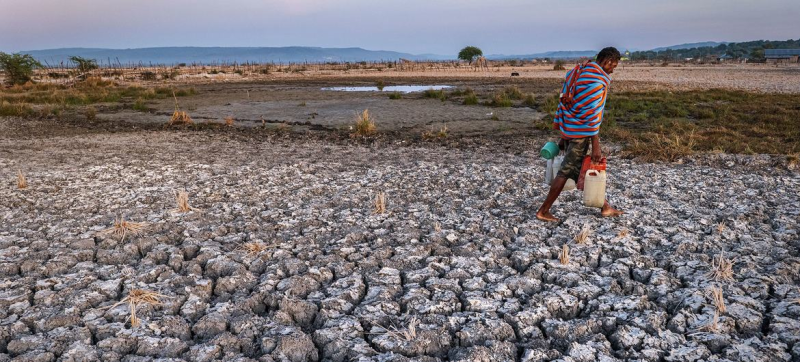- Govt to cut savings certificate profit rates from January |
- Gold prices hit fresh record in Bangladesh within 24 hours |
- Election to be held on time, Prof Yunus tells US Special Envoy |
- Moscow wants Dhaka to reduce tensions domestically, also with Delhi |
- Saarc experts meet to reduce livestock-origin greenhouse gases |
Report Uncovers Strong Link Between Poverty and Climate Crisis

A man crosses parched farmland in East Nusa Tenggara Province, Indonesia. (file)
Nearly 80 per cent of the world’s poor – about 887 million people – live in regions exposed to extreme heat, flooding, and other climate hazards, highlighting the urgent need for global action.
This finding comes from a groundbreaking report released on Friday by the UN Development Programme (UNDP) and Oxford University, ahead of the COP30 climate summit in Brazil next month.
By overlaying climate hazard data with multidimensional poverty data for the first time, the report reveals how the climate crisis is reshaping the global landscape of poverty.
“Poverty is no longer a standalone socio-economic issue. It is compounded by and interlinked with the increasingly dramatic effects of the climate emergency,” said UNDP Acting Administrator Haoliang Xu.
Millions Facing Multiple Climate Shocks
High heat, air pollution, flooding, and drought are the most widespread hazards affecting the world’s poor, who often face multiple environmental challenges simultaneously.
Globally, 1.1 billion people live in multidimensional poverty – encompassing health, education, and living standards – and 887 million of them are directly exposed to at least one climate hazard.
A staggering 651 million people endure two or more hazards, while 309 million live in regions facing three or four climate shocks at once.
Geographical Hotspots
South Asia and sub-Saharan Africa account for the largest numbers of poor people in regions affected by climate hazards, with 380 million and 344 million, respectively.
In South Asia, nearly every person living in poverty – 99.1 per cent – is confronting one or more climate shocks. The region also leads the world in the number of people facing two or more hazards, totalling 351 million, or 91.6 per cent of its poor population.
“Middle-income countries are a hidden epicentre of multidimensional poverty, being home to nearly two-thirds of all poor people. And this is also where the climate crisis and poverty are notably converging,” said Sabina Alkire, Director of the Oxford Poverty and Human Development Initiative.
Approximately 548 million poor people in lower middle-income countries are exposed to at least one climate hazard, while over 470 million face two or more.
The report also notes that countries with higher current levels of multidimensional poverty are projected to experience the greatest temperature increases by the end of the century.
‘Hope and Cooperation’
The report’s authors underscored the need for immediate global action.
“From our point of view at UNDP, addressing such complex and interrelated issues requires holistic, cross-sectoral solutions that are adequately funded and implemented with urgency,” Mr Xu said.
“As we look to COP30, we carry forward a message of hope and cooperation. We know what works and can continue to support the populations and countries in need.”

